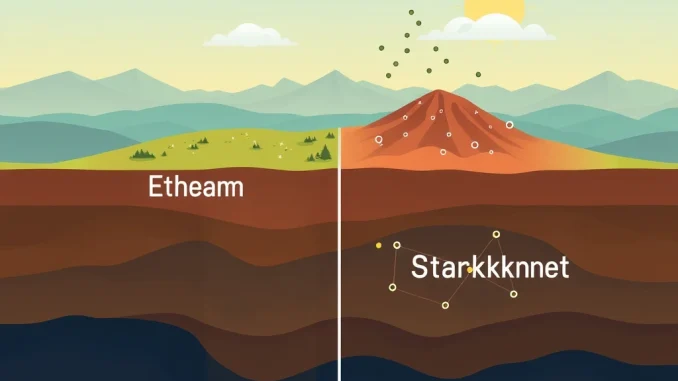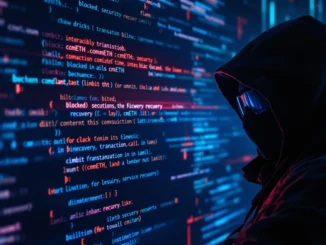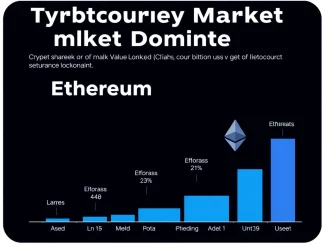
Big news for the Ethereum ecosystem! Starknet, a leading Ethereum layer-2 scaling solution, has officially hit a significant milestone: achieving Stage 1 decentralization. This progress is measured against a framework introduced by Ethereum co-founder Vitalik Buterin back in 2022, often referred to as the ‘training wheels’ model. This isn’t just a technical step; it’s a move towards a more robust and censorship-resistant future for applications built on Starknet.
Understanding Vitalik Buterin’s Decentralization Framework
What does ‘Stage 1 decentralization’ actually mean? Vitalik Buterin’s framework provides a clear path for rollups to transition from being centrally controlled to becoming fully decentralized. It outlines three distinct stages:
- Stage 0: Centralized. In this initial phase, the rollup operator holds significant control, including the ability to upgrade the system or potentially censor transactions. This is the starting point for many new rollups, like learning to ride a bike with training wheels firmly attached.
- Stage 1: Partially Decentralized. At this stage, critical escape hatches and security mechanisms are in place. While the operator still has some control (like the ability to upgrade), users have recourse if something goes wrong, and censorship resistance is improved. The training wheels are still there, but you’re starting to rely more on your own balance.
- Stage 2: Fully Decentralized. The ultimate goal. Here, the system is governed by the community, upgrades require decentralized consensus, and there are no central points of control or censorship. The training wheels are off, and you’re riding freely.
Reaching Stage 1 is a critical step because it introduces real-world protections and significantly reduces reliance on a single entity.
How Starknet Reached Stage 1 Decentralization
So, how did Starknet get here? The achievement of Stage 1 is the result of implementing several key components that align with the requirements of the ‘training wheels’ framework. These include:
- Launch of a Security Council: This council acts as a multi-signature guardian, providing a layer of oversight and control over critical system functions, preventing a single point of failure or malicious action by the operator.
- Enhanced Censorship Resistance: Mechanisms have been put in place to make it harder for any single party to prevent transactions from being included in the rollup. This is vital for ensuring fair access and operation.
- Smart Contract-Based Validity Proof System: Starknet utilizes ZK-rollup technology, relying on validity proofs posted on Ethereum. The system for verifying these proofs is now more integrated and reliant on smart contracts, reducing the trust required in the operator’s off-chain infrastructure.
These technical advancements collectively move Starknet from a centralized Stage 0 to a partially decentralized Stage 1, providing users and developers with greater assurance regarding the platform’s long-term stability and security.
What Stage 1 Means for Ethereum Scaling and Users
Achieving Stage 1 decentralization is a major win not just for Starknet, but for the broader goal of `Ethereum scaling`. `Layer 2 scaling` solutions like Starknet are essential for increasing Ethereum’s transaction throughput and reducing costs. As these solutions mature and become more decentralized, they become more trustworthy alternatives to interacting directly on the Ethereum mainnet for many applications.
For users and developers on Starknet, Stage 1 means increased confidence. The system is less reliant on the Starknet Foundation or any single operator. This reduces ‘custodial risk’ and the potential for unexpected changes or downtime. It signals that the platform is maturing and moving towards becoming a public utility rather than a proprietary service.
The Path to Full Community Governance and Beyond
While Stage 1 is a significant milestone, the journey isn’t over. Starknet’s stated goal is to reach Stage 2, achieving full `community governance`. This will involve further transferring control and decision-making power to the hands of token holders and network participants, making the protocol truly self-sufficient and resistant to centralized influence.
The roadmap also includes exciting developments beyond just decentralization on Ethereum. Starknet has expressed interest in expanding its technology and influence towards the Bitcoin ecosystem, exploring potential scaling solutions or interoperability features. This highlights the ambition to apply their ZK-rollup expertise across different blockchain networks.
In Summary: A Key Step Forward
Starknet reaching Stage 1 decentralization is a concrete demonstration of progress in the `Layer 2 scaling` space. By implementing key security and censorship-resistance features aligned with `Vitalik Buterin’s` framework, Starknet has significantly enhanced its trustworthiness and robustness. While the ultimate goal of full `community governance` (Stage 2) is still ahead, this milestone confirms Starknet’s commitment to decentralization, paving the way for a more secure and scalable future for applications built on Ethereum and potentially beyond.



